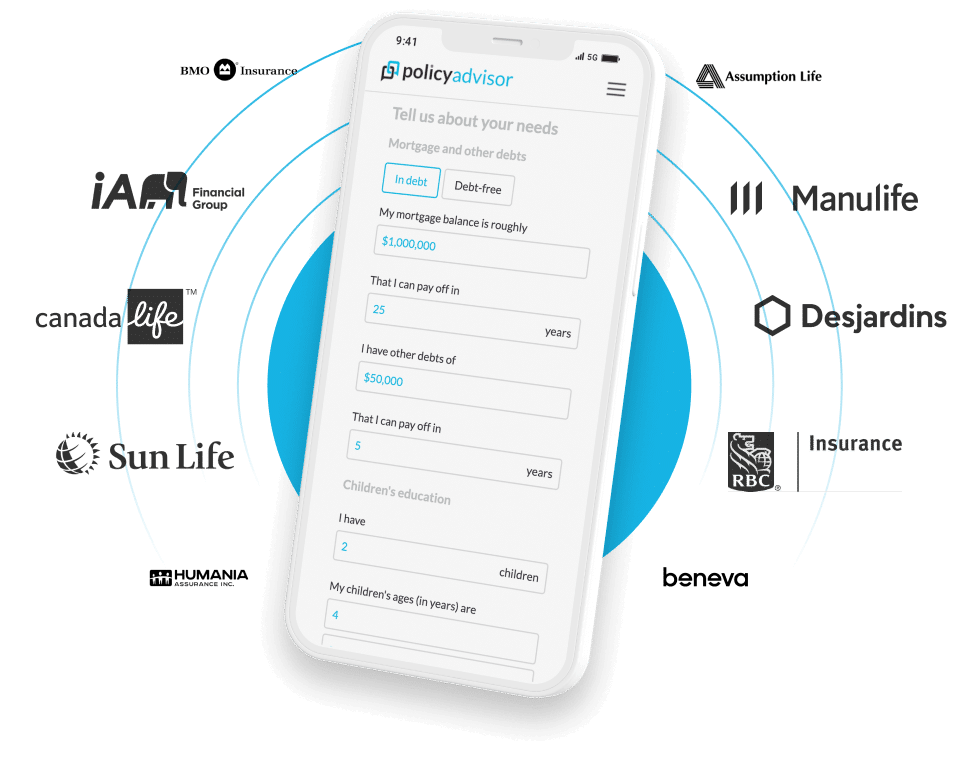When we buy insurance, we assume that the company will follow through with its promise to pay out. But what if the company goes under before your contract is up?
If you’re purchasing a life, health, critical illness, or disability insurance policy the issue of your insurer going bankrupt may have crossed your mind. But we know that even large insurance companies, such as the U.S.-based insurance giant AIG, can go under.
The chance that a Canadian insurance company goes bankrupt is quite slim. But, as a Canadian insurance policyholder, you can rest assured you’re protected even if your insurer does head towards failure.
What if my insurance company goes bankrupt?
In Canada, there is a two-pronged approach to protect you against an insurance company bankruptcy—prevention and risk-transfer.
Prevention
Office of the Superintendent of Financial Institutions (OSFI) is a government body that makes rules and regulations for the insurance company to ensure that they don’t go bankrupt.
Risk-Transfer
Assuris is a non-profit, industry-funded organization. Assuris makes sure that if your insurance company goes bankrupt, your policy is fairly transferred to a new insurance company, so you maintain a majority of your coverage.
If OSFI is a warning sign, then Assuris is the caretaker for more dire circumstances. Below, we dive a bit deeper into what these two organizations are responsible for.
What is OSFI?
OSFI (Office of the Superintendent of Financial Institutions) is a government agency that supervises banks, insurance companies, and trust and loan companies. The organization helps consumers maintain their confidence in the financial markets and with the industries they oversee. This includes helping you ward off your fears of your insurance company going bankrupt.
What does OSFI do?
Working on the principle that prevention is better than a cure, OSFI further conducts reviews of federally regulated insurers to make sure they’re keeping up with their financial well-being. For example, the Insurance Companies Act requires federally registered life insurance companies to maintain adequate capital and assets over their liabilities; OSFI enforces these laws.
What are OSFI guidelines?
OSFI uses various calculations to corroborate their assessment of the financial health of the insurance companies. For example, the OSFI established a target total ratio of 150% for insurance companies when legal requirements are 120%. Essentially, the higher the ratio, the better the position the insurance company is in to pay out all its claims.
You can read more about all of the OSFI guidelines on their website.
What is the difference between OSFI and CDIC?
OSFI is a regulatory body that prevents insurance companies and financial institutions from going bankrupt but enforcing guidelines for financial strength. The Canadian Deposit Insurance Corporation (CDIC) protects the deposits that you make to your financial institution, like credit unions or banks. OSFI operations on prevention, whereas the CDIC is like insurance for your bank—they’ll bail out the banks and protect your deposits if the banks fail.
What is the difference between CSA and OSFI?
Again, OSFI is a regulatory body that prevents insurance companies and financial institutions from going bankrupt but enforcing guidelines for financial strength. The Canadian Securities Administrators (CSA) is a regulatory body that watches the Canadian capital markets. Their mission is “to protect investors from unfair, improper or fraudulent practices; to foster fair and efficient capital markets; and to reduce risks to the market’s integrity and to investor confidence in the markets.”
Who is Assuris?
Assuris is an independent not-for-profit organization, designated by the Minister of Finance. If your life or health insurance company goes bankrupt, Assuris covers most, if not all, of your insurance benefits.
What is Assuris protection?
Recently, Assuris has increased its protection levels. As of 2023, they will protect up to 90% of your life and health insurance benefits.
What will Assuris cover?
In general, Assuris will make sure you have up to 90% of your coverage maintained when your policy is transferred to the liquidator. For each products, they have specific promised amounts as well.
| Benefit | Assuris Protection | |
|---|---|---|
| Death Benefit | $1,000,000 |
Or 90% of coverage (whichever is higher) |
| Health Expense | $250,000 | |
| Monthly Disability Income | $5,000/month | |
| Investment/Savings
– Cash value |
$100,000 | |
How is Assuris funded?
Although designated by the Minister of Finance, Assuris is a non-profit that is funded by its members (health and life insurers) to protect policyholders in case a particular life insurance company fails. You do not pay for Assuris protection as a policyholder. Assuris is an industry-funded compensation body.
How does Assuris protect policyholders?
When a life insurance company declares bankruptcy, a court-appointed liquidator will take over the policy. Assuris oversees this transfer of policies to make sure you get the coverage you paid for.
Who is a member of Assuris?
Regulators require every life insurance company in Canada to become a member of Assuris. So, you generally don’t have to worry whether your insurer is part of the organization.
Here is a complete list of companies that we work with that are members of Assuris:
- Allianz
- Assumption Life
- Beneva
- Blue Cross
- BMO Insurance
- Canada Life (formerly Great West)
- Canada Protection Plan
- Desjardins
- Empire Life
- Equitable Life
- Foresters
- Green Shield
- Humania
- Industrial Alliance (iA)
- ivari
- Manulife
- RBC Life Insurance
- Sun Life
- Wawanesa
- And more!
Who has Assuris helped?
In 2012, the Union of Canada Life Insurance went under. The insurer had 22,000 policyholders, and Assuris fully protected 99% of policyholders. The remaining 1% received at least 95% of their benefit.
Further, in the 90s, three firms, Les Cooperants, Sovereign Life, and Confederation Life faced liquidation. Assuris provided immediate protection to Canadian policyholders. Between these events and others, Assuris has protected almost three million people.
How to protect yourself from a bankrupt insurance company
It’s always important to do your due diligence on an insurance company before purchasing a policy. Especially if they’re not a household name, you should ensure that they’re a part of Assuris and are federally regulated to sell their products.
Purchasing from a more prominent insurer or splitting your needs between multiple companies can also mitigate your risks. However, these can come with drawbacks.
1. Choose a bigger insurance company
Every Canadian insurance company is generally financially sound due to government regulations. But more prominent insurance companies with a history in the industry have a better understanding of the insurance landscape. This often means they understand how avoid financial risk and grow assets better than smaller companies. Many of Canada’s largest insurance companies are also graded by credit and financial rating agencies such as AM Best.
⚠️ Drawbacks
The smaller insurers may provide better pricing and have specific features to suit your needs, even if they’re not as well known.
2. Split your insurance needs
If you’re really concerned about the possibility of bankruptcy, another strategy is to work with multiple insurance companies. For example, instead of a $500,000 policy from one insurer, you could purchase two $250,000 policies from two different insurance companies. If you are using a ladder strategy to extend your coverage, consider using a different provider for term and permanent insurance policies.
⚠️ Drawbacks
You’ll have to pay multiple policy fees as you are taking out multiple life insurance policies. Additionally, you lose out on volume discounts— as your death benefit amount increases you pay less per one thousand dollars of insurance coverage.
Get an insurance quote
Our licensed insurance experts work with over 30 insurance providers and can walk you through some of the best, financially sound insurance companies. Our advisors can provide more information on what’s best for your financial goals and explain whether your insurance company’s chances at bankruptcy are really a risk you need to consider.
In Canada, there are strong measures in place to make sure you’re protected if your life insurance company goes under. The Office of Superintendent of Financial Institutions (OSFI) makes rules to prevent insurance companies from going bankrupt. If a life insurance company does go bankrupt, Assuris steps in to make sure up to 90% of your coverage is maintained. To protect yourself even further, you can pick a well-known insurance company or divide your coverage between different companies.





